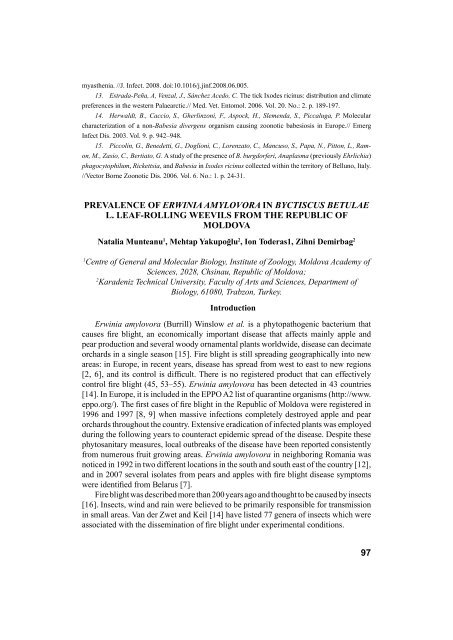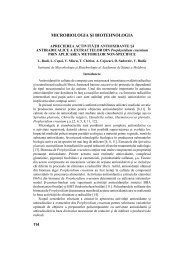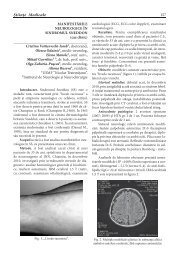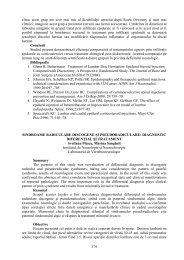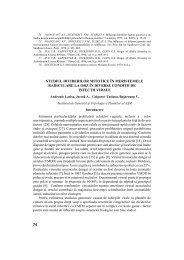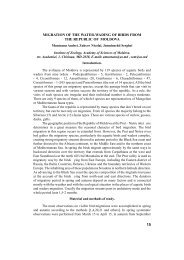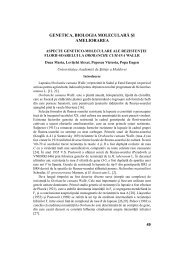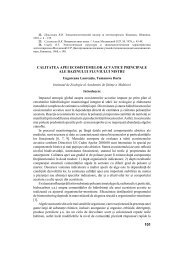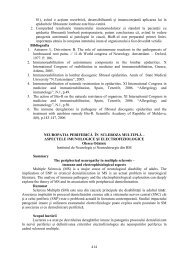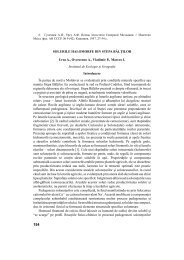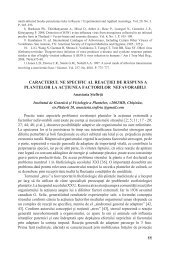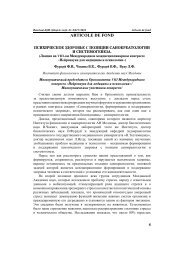198 CUPRINS
198 CUPRINS
198 CUPRINS
You also want an ePaper? Increase the reach of your titles
YUMPU automatically turns print PDFs into web optimized ePapers that Google loves.
myasthenia. //J. Infect. 2008. doi:10.1016/j.jinf.2008.06.005.<br />
13. Estrada-Peña, A, Venzal, J., Sánchez Acedo, C. The tick Ixodes ricinus: distribution and climate<br />
preferences in the western Palaearctic.// Med. Vet. Entomol. 2006. Vol. 20. No.: 2. p. 189-197.<br />
14. Herwaldt, B., Caccio, S., Gherlinzoni, F., Aspock, H., Slemenda, S., Piccaluga, P. Molecular<br />
characterization of a non-Babesia divergens organism causing zoonotic babesiosis in Europe.// Emerg<br />
Infect Dis. 2003. Vol. 9. p. 942–948.<br />
15. Piccolin, G., Benedetti, G., Doglioni, C., Lorenzato, C., Mancuso, S., Papa, N., Pitton, L., Ram-<br />
on, M., Zasio, C., Bertiato, G. A study of the presence of B. burgdorferi, Anaplasma (previously Ehrlichia)<br />
phagocytophilum, Rickettsia, and Babesia in Ixodes ricinus collected within the territory of Belluno, Italy.<br />
//Vector Borne Zoonotic Dis. 2006. Vol. 6. No.: 1. p. 24-31.<br />
PREVALENCE OF ERWINIA AMYLOVORA IN BYCTISCUS BETULAE<br />
L. LEAF-ROLLING WEEVILS FROM THE REPUBLIC OF<br />
MOLDOVA<br />
Natalia Munteanu 1 , Mehtap Yakupoğlu 2 , Ion Toderas1, Zihni Demirbag 2<br />
1 Centre of General and Molecular Biology, Institute of Zoology, Moldova Academy of<br />
Sciences, 2028, Chsinau, Republic of Moldova;<br />
2 Karadeniz Technical University, Faculty of Arts and Sciences, Department of<br />
Biology, 61080, Trabzon, Turkey.<br />
Introduction<br />
Erwinia amylovora (Burrill) Winslow et al. is a phytopathogenic bacterium that<br />
causes re blight, an economically important disease that affects mainly apple and<br />
pear production and several woody ornamental plants worldwide, disease can decimate<br />
orchards in a single season [15]. Fire blight is still spreading geographically into new<br />
areas: in Europe, in recent years, disease has spread from west to east to new regions<br />
[2, 6], and its control is dif cult. There is no registered product that can effectively<br />
control re blight (45, 53–55). Erwinia amylovora has been detected in 43 countries<br />
[14]. In Europe, it is included in the EPPO A2 list of quarantine organisms (http://www.<br />
eppo.org/). The rst cases of re blight in the Republic of Moldova were registered in<br />
1996 and 1997 [8, 9] when massive infections completely destroyed apple and pear<br />
orchards throughout the country. Extensive eradication of infected plants was employed<br />
during the following years to counteract epidemic spread of the disease. Despite these<br />
phytosanitary measures, local outbreaks of the disease have been reported consistently<br />
from numerous fruit growing areas. Erwinia amylovora in neighboring Romania was<br />
noticed in 1992 in two different locations in the south and south east of the country [12],<br />
and in 2007 several isolates from pears and apples with re blight disease symptoms<br />
were identi ed from Belarus [7].<br />
Fire blight was described more than 200 years ago and thought to be caused by insects<br />
[16]. Insects, wind and rain were believed to be primarily responsible for transmission<br />
in small areas. Van der Zwet and Keil [14] have listed 77 genera of insects which were<br />
associated with the dissemination of re blight under experimental conditions.<br />
97


